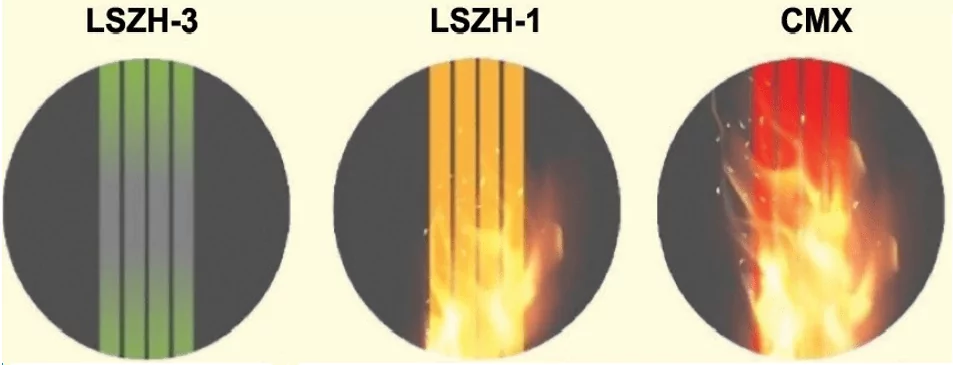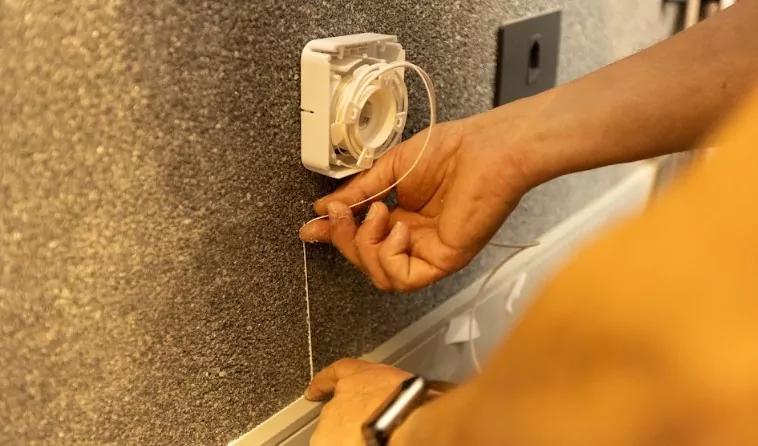In a fire, the spread of flames can be quite harmful to physical facilities. But smoke, containing toxic gases, is the biggest cause of harm (or death) to people. Statistics from the Fire Department show that most deaths in fires result from the large amount of dense black smoke, which makes it difficult for people to see and escape, and from poisoning by toxic gases contained in the smoke.
Therefore, the safety of internal cables used in buildings and places with high foot traffic becomes increasingly important – and attention must be paid by manufacturers, installers and users themselves. Concern for people’s safety, as well as with the protection of investments in equipment and buildings, has been a key point in choosing products for new buildings, the technological upgrading of projects, telecommunications rooms and electrical facilities in general.
Defining the type of cable used in a project is critical to protect the infrastructure. For this, it is important to understand the characteristics of flammability, density and toxicity of smoke, under the various applications of cables in a network infrastructure.
In general, cables for internal facilities are classified into five types, according to their behavior during a fire (flammability), according to ABNT NBR 14705 [1]:
Plenum – Plenum Optical/Metal Cable (COP/CMP) – or OFNP Classification or OFCP (for cables imported from the USA)
Suitable for applications inside air conditioning ducts, horizontal application, in confined places, with or without forced air flow, or places with fire propagation conditions similar to these.
Riser – Optical/Metal Cable Riser (COR/CMR) – or OFNR or OFCR Classification (for cables imported from the USA)
Indicated for use in shafts, channels embedded in beams, columns or slabs, where wiring and/or pipes pass, vertical applications where cables cross more than one floor, places without forced air flow, pipes with low occupancy or places with fire propagation conditions similar to these.

General Use – Optical/Metal Cable (COG/CM) – or OFN or OFC Classification (for cables imported from the USA)
Suitable for vertical applications without forced airflow, in pipes with high occupancy (low oxygen levels), facilities in the same environment or places with fire propagation conditions similar to these.
Limited use – Metal cable (CMX)
Indicated for horizontal applications without a concentration of cables, in metal pipes, without forced air flow, exposed region (outside the pipe) not exceeding 3 meters in length and its largest transverse dimension (external diameter of the cable) less than 6.4 mm. It is the classification with the least amount of protection against the spread of fire, recommended for use in small offices and homes.
Most of these cables are manufactured with a PVC coating, containing halogens in its composition, and, under normal conditions of use, they are stable and do not present danger. However, when they burn or combust, they emit gases and smoke that are toxic and corrosive, and extremely harmful to facilities and human health.
In addition to high toxicity, cables containing halogens combust with thick, dark smoke that can block light and prevent emergency exits from being seen.
LSZH type cables
In order to increase the safety of people in the possible event of a fire, LSZH – Low Smoke and Zero Halogen materials were developed. This means that, upon burning, LSZH cables do not emit toxic gases and generate little smoke, which is neither dense nor dark. That is why this type of cable is recommended for places with high foot traffic or concentration of people, such as commercial buildings, public buildings, shopping centers, train and subway stations, hospitals, airports, hotels, schools, data centers, as well as horizontal and vertical applications, places with or without forced airflow, or places with fire propagation conditions similar to these.
LSZH cables must meet the flame retardant characteristics of the cables according to IEC 60332-1 or IEC 60332-3, as well as the requirements of smoke density and toxicity of the gases generated in their combustion. Cables classified as IEC 60332-1 (LSZH-1) are recommended for simpler applications, without the use of beams/ concentration of cables (similar to CMX).
For applications in structured cabling, where LAN cable bundles are used, we recommend using the IEC 60332-3 (LSZH-3) classification, with a flammability characteristic similar to that of the CM. In case of fire, this type of cable has a good capacity to slow the flame, which makes it more suitable for environments with a high concentration of people.

Conclusion:
For places with predicted concentration of people or high foot traffic, we recommend using LSZH cables (LSZH-3) as they do not emit toxic gases, generate little smoke, which is not dense or dark and the flammability classification is for general use.
[1] ABNT NBR 14705 – Classification of Internal Cables for Telecommunications – Behavior during a Fire. 2010.





